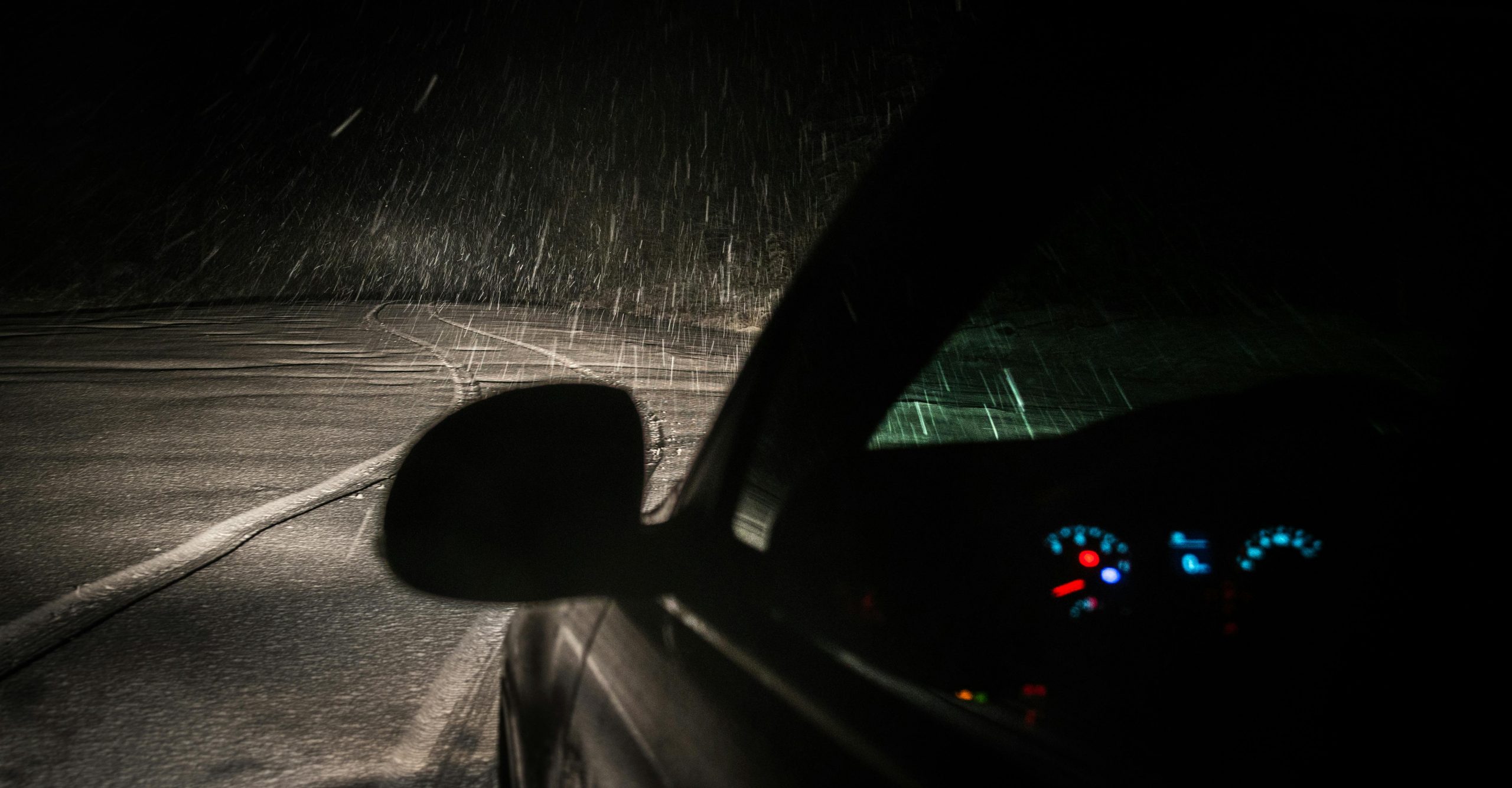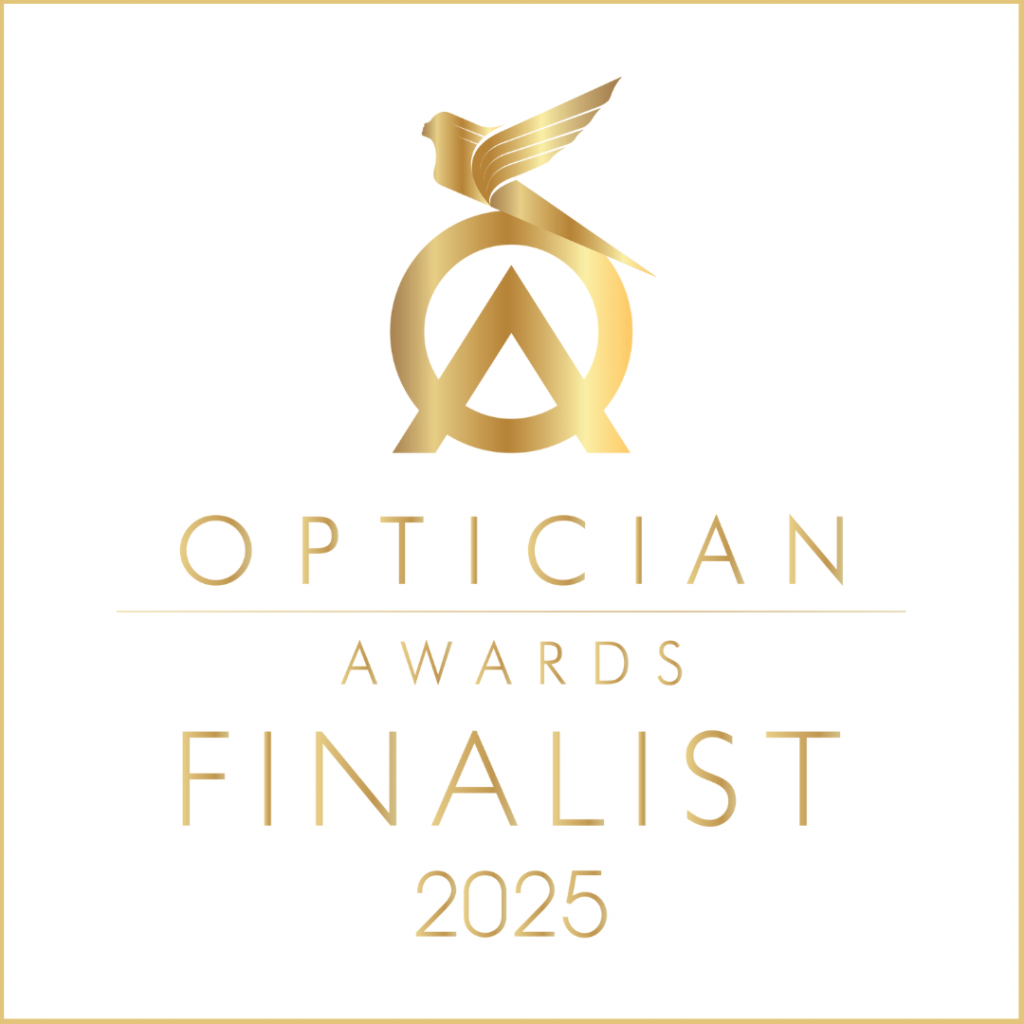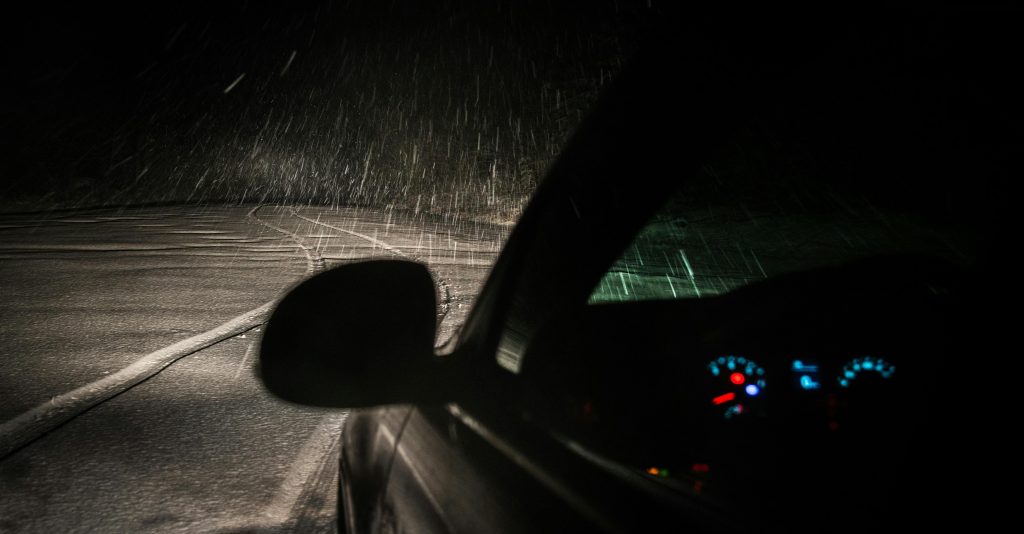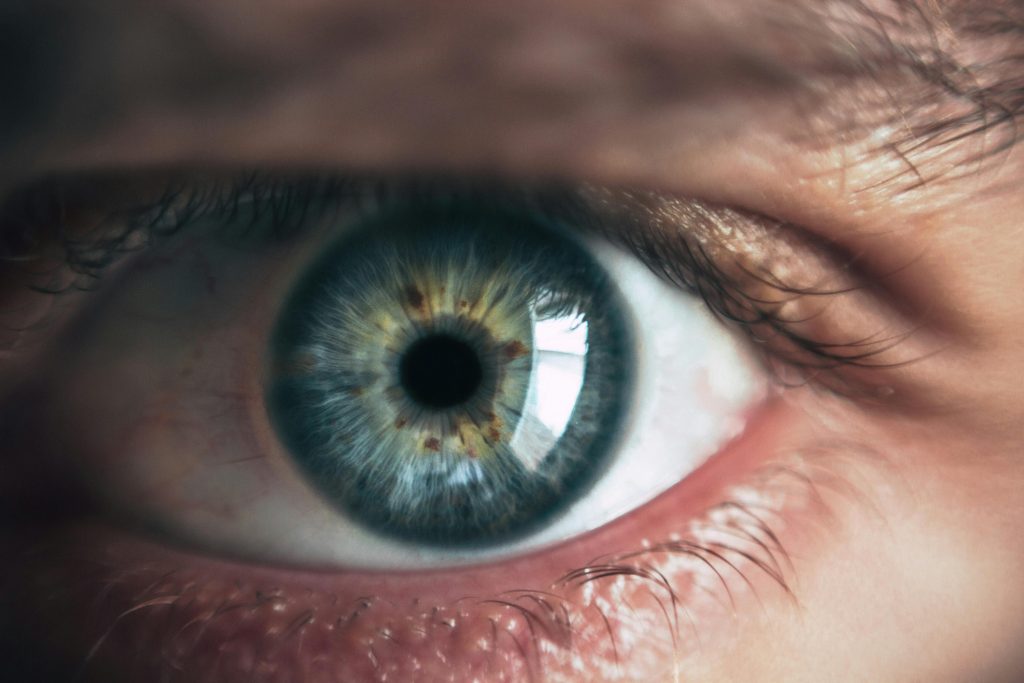As the evenings draw in and the clocks go back, many of us find ourselves driving home in the dark more often.
While night driving is something we all do, it’s also something that many people find more difficult as they get older.
Glare from headlights, reduced contrast, slower reactions and even anxiety behind the wheel are all common complaints in the darker months that we hear from patients.
If you’ve ever struggled with seeing clearly while driving at night, don’t worry… you’re not alone.
In fact, a 2018 survey by the RAC found that 65% of drivers said they struggled to see when driving in the dark.
That’s why we’ve written this guide to help you understand why that is and what you can do to protect your vision, improve your comfort, and stay safe on the roads.
Why is night driving more difficult?
The simple answer is our eyes work differently in the dark.
As the light fades, our pupils dilate to let in more light, and we rely more on rod cells in the retina, which are more sensitive to light but poorer at detecting detail and colour.
A few key changes affect our ability to drive safely:
- > Reduced contrast: It’s harder to see edges, road markings, or pedestrians
- > Increased glare: Bright headlights and streetlights can scatter more in the eye, especially if you have cataracts or early lens changes
- > Slower recovery: After exposure to bright lights, older eyes take longer to adjust back to darkness
- > Depth perception and peripheral vision: Reduce in low light
These changes are natural but can be made worse by uncorrected vision, dirty windshields, or medical conditions.
Here are 10 ways you can stay safer on roads whilst driving at night.
1. Make sure your prescription is up to date
Even a small change in your prescription can make a big difference to how well you see at night.
Night vision relies on accurate contrast detection, and uncorrected refractive errors such as myopia (only being able to see things near to you), hyperopia (only being able to see things further away) or astigmatism (a different shaped cornea) can lead to blurred or double vision in low light.
In fact, research published in the British Journal of Ophthalmology found that uncorrected refractive error is one of the most common causes of visual impairment worldwide. For drivers, this can translate to delayed reactions, missed road signs, and increased fatigue.
If you haven’t had an eye test in the last two years (or sooner if advised), now is a good time to book one.
(At Edwards & Walker, we’ll also check for early signs of cataracts or other conditions that will affect night vision 😊).
2. Ask about anti-reflection coatings
If you wear glasses, make sure your lenses have an anti-reflective (AR) coating.
These coatings work by reducing the amount of light that reflects off the front and back surfaces of your lenses. Instead of scattering light and creating halos, the coating allows more light to pass through the lens, improving clarity and reducing glare.
Lenses without AR coatings can cause distracting reflections, especially at night. Most modern lenses include this by default, but it’s worth checking.
Some coatings are also designed specifically for night driving and low-light conditions, using blue light filtering or contrast-enhancing technology.
For instance, at Edwards & Walker, our Platinum Protect Coating offers a combination of benefits ideal for night driving, including advanced anti-dazzle protection to reduce glare from headlights and wet roads, UV420++ protection for added safety from UV damage, and a built-in blue light filter to support comfort under LED lighting.
Similarly, our Honeycomb Lens uses a microscopic hexagonal pattern to distribute light more evenly across the lens surface, helping to reduce scatter and improve clarity in low-light environments.
Both of these coatings can also reduce eye fatigue and provide sharper, crisper vision – making night-time driving more comfortable and less stressful.
(Speak to us about these options if you’d like to learn more 😊).
3. Keep your windscreen clean inside and out
It might sound obvious, but smears, dust and fog on the inside of your windscreen can scatter light and increase glare, especially at night. Even if your windscreen looks clean in the daytime, it can become a real problem in the dark.
- > Use a microfibre cloth and glass cleaner on the inside regularly
- > Top up screenwash and make sure your wiper blades are working properly
- > Check your headlights and indicators are clean and fully functional
4. Don’t ignore signs of discomfort
If you find yourself squinting, blinking more, or feeling eye strain when driving at night, don’t brush it off. These can all be signs that your eyes are struggling.
For example, a 2020 article in Clinical Ophthalmology highlighted that symptoms like transient blurring, glare, and visual fatigue are common early indicators of dry eye syndrome, a condition that can worsen at night.
Mention your symptoms at your next eye test with us, even if you think they’re minor. In some cases, we may recommend:
- > A small prescription for night driving only
- > A different lens design or coating
- > Dry eye management if your eyes feel gritty or watery
5. Avoid looking directly at oncoming headlights
Bright headlights from oncoming cars can temporarily dazzle you, especially on unlit roads. To reduce the impact:
- > Look slightly to the left (towards the kerb) as the car approaches
- > Keep your windscreen clean to avoid light scatter
- > Use the anti-glare position on your rear-view mirror
6. Don’t drive when tired
Fatigue makes your reaction times slower and affects how your eyes respond to changing light. If you’re feeling tired, even before you set off, your night vision is likely to be worse.
Make sure you:
- > Get enough rest before long journeys
- > Take regular breaks
- > Avoid heavy meals or alcohol before driving
7. Consider a dedicated night driving lens
Some lenses are designed specifically for low-light or night-time driving. These lenses may include:
- > Slight yellow or amber tints to improve contrast
- > Special coatings to reduce glare
- > Enhanced optical designs for better edge-to-edge clarity
As previously mentioned, our Platinum Protect Coating – which combines anti-reflective, anti-glare, anti-dazzle and UV protection technologies – would be a good option. The coating helps to reduce glare from headlights and street lighting, and reduce eye strain from modern LED sources.
Another option would be our Honeycomb lens coating – which applies a structured matrix of tiny hexagonal cells to the lens surface – that helps reduce scattered light and glare in both bright and low-light settings, making it easier to maintain focus and reduce fatigue behind the wheel. The coating also features water-repellent, scratch-resistant, and easy-clean properties, which can be especially useful during autumn and winter driving conditions.
(Call us anytime, or pop in, if you’d like to find out more about either of these lenses 😊)
8. Manage dry eyes
Dry eyes can cause blurred vision and light scatter, especially at night. If you often experience gritty, watery, or uncomfortable eyes, talk to us about it. Some treatment options might include:
- > Lubricating eye drops
- > Warm compresses
- > In-practice treatments (such as Meibomian gland expression, BlephEx or IPL)
Treating dry eye can significantly improve visual comfort while driving.
You can find out more about dry and the treatment options here.
9. Stay on top of general eye health
Eye health conditions such as cataracts, glaucoma, and macular degeneration can all impact night vision. Many of these develop slowly and may not show symptoms early on.
For example, glaucoma often affects peripheral vision first and may go unnoticed until more advanced stages. Cataracts can cause glare and halos around lights at night, and early macular degeneration may affect central vision or contrast sensitivity.
Regular eye tests are the best way to catch these issues early and protect your long-term vision.
If you have any family history of eye disease or notice a change in your vision at night, come and see us right away.
10. Don’t rely on tinted or reactive lenses at night
Photochromic (light-reactive) lenses are not designed for night-time use. They typically remain clear in the dark, but some older designs may still have a slight tint.
Dark sunglasses should never be worn while driving at night.
If glare is your main concern, talk to us about alternatives designed specifically for night driving.
In summary…
Driving at night doesn’t have to be stressful, but it does place extra demands on your eyes. With shorter days and darker evenings, autumn is a great time to check in on your vision and take a few simple steps to stay safe on the road.
Whether it’s updating your prescription, improving lens quality, or managing glare and dryness, good night vision starts with good eye care.
If you’re finding driving at night more difficult than it used to be, don’t put up with it.
Book an appointment with us and get the guidance you need to drive safely and comfortably at night.






